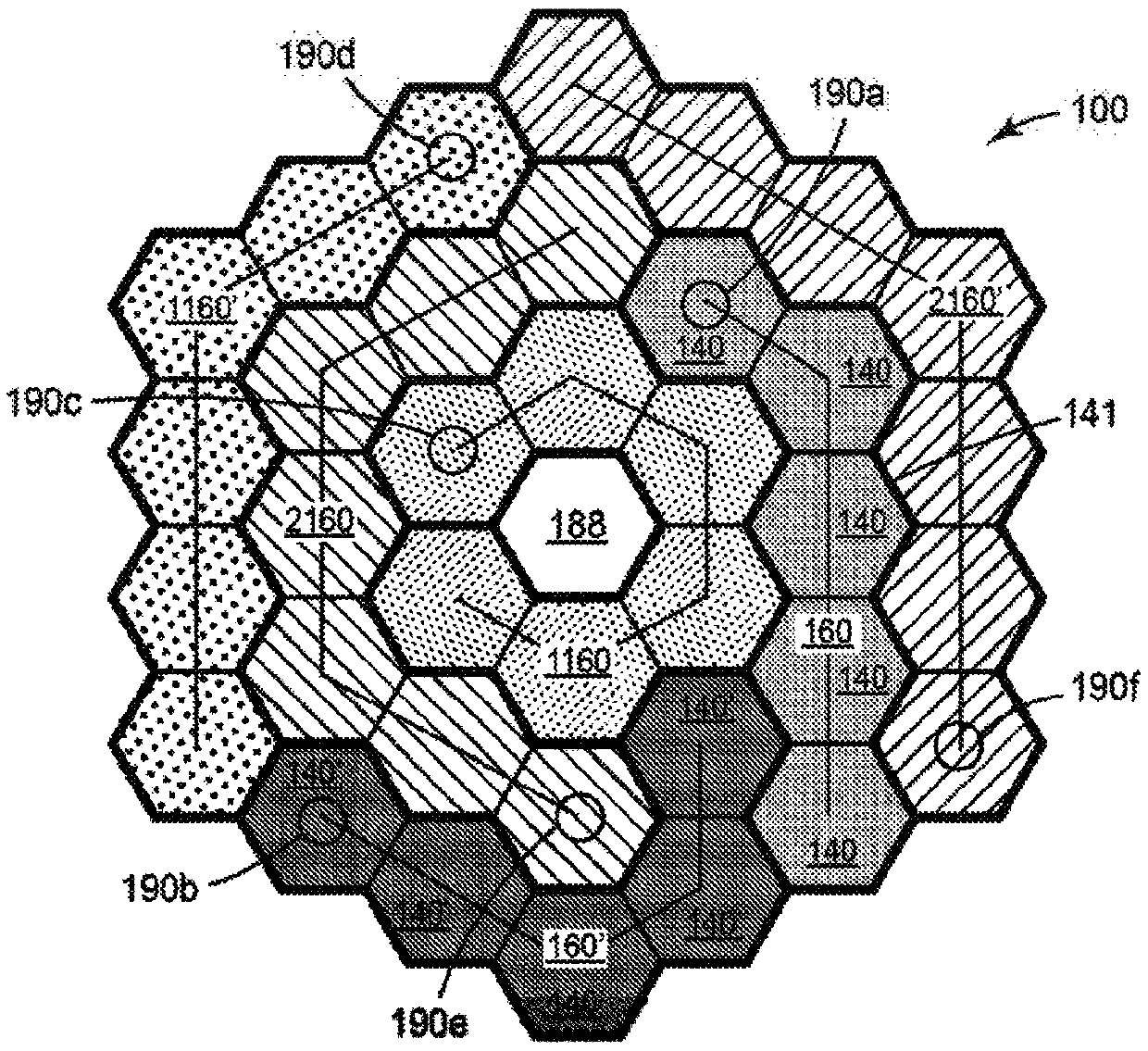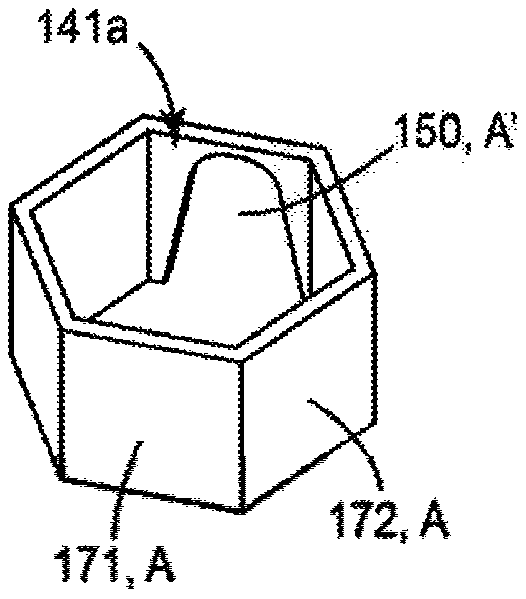Sound-absorbing panels comprising a core consisting of connected cells, wherein some of the cell walls have openings
A unit wall, panel technology, used in other home appliances, sound insulation, building components, etc.
- Summary
- Abstract
- Description
- Claims
- Application Information
AI Technical Summary
Problems solved by technology
Method used
Image
Examples
Embodiment 1- Embodiment 4
[0357] Commercial modeling software (acoustics software module available from COMSOL, Inc., Burlington, MA under the trade designation "COMSOL MULTIPHYSICS (Finite Element Method Multiphysics Modeling and Analysis)") The acoustic absorption rate of a 14mm hexagon with two wall heights of 10mm and 12.7mm was modeled.
[0358] Printed using a 3-D printer (obtained from 3D Systems, Rock Hill, SC) under the trade designation "PROJET 7000HD SLA" using resin obtained from 3D Systems under the trade designation "VISIJET FLEX" These designs. Figure 14 A pattern of positioned connected hexagons and holes is shown, both modeled and 3D printed. Each sample has two sets of 5 connected hexagons (1460, 1460'), a first pair of 6 connected hexagons (1470, 1470'), a second pair of 6 connected hexagons (1471, 1471'), and three sets of 7 connected hexagons (1480, 1480', 1480"). Print the upper skin to leave holes in the upper skin (see Figure 14 , 1460a to 1480c) (and Table 1 below).
[03...
Embodiment 5 and Embodiment 6
[0364] Honeycomb structure panels with 11.5mm hexagonal cells were prepared by extrusion replication lamination, then channels were processed to make multiple linear cells of 5 hexagons and 7 hexagons, and to make cells of 6 hexagons twice as much. Holes are drilled in the top skin and the bottom skin is laminated in a double belt laminator. The details of the preparation of the acoustic panels are given below.
[0365] - Skin preparation
[0366] A 2.5 inch (6.25 cm) extruder (commercially Obtained under the name "NRM" from Davis-Standard, Pawcatuck, CT) extruded 35% by weight glass fiber-filled polypropylene (GFPP) resin (under the trade designation "XMOD GB306" Obtained from Borealis, Vienna, Austria). An 18 inch (457 mm) film die at 460°F (238°C) was used to drop the extrudate into a 3 roll stack. The extrudate was sandwiched between a first chrome roll at 90°F (32°C) and a second chrome roll at 120°F (49°C) and the second chrome roll was stripped to a chrome roll a...
Embodiment 7 to Embodiment 9
[0375] The skin preparation and honeycomb panel preparation procedures were as described for Example 5.
[0376] -Preparation of acoustic panels
[0377] Three honeycomb panels of approximately 39 inches by 15 inches (1143 by 432 mm) produced as described above were machined in a vertical machining center. Install the panels first using double-sided tape. Then, the top skin was removed, and a 7 / 32 inch (5.55 mm) ball nose end mill was used to remove the honeycomb walls to within 0.015 inches (0.38 mm) of the bottom skin. The pattern of interconnected hexagons is changed to figure 1 The nested hexagonal array shown in . Within the larger 37-hexagonal repeat unit that repeats in these panels are two sets of 5 interconnected hexagons, two sets of 6 interconnected hexagons, and two sets of 7 interconnected hexagons .
[0378] Holes were drilled in the top skin and the hole sizes are given in Table 2 below.
[0379] Table 2
[0380]
[0381] Some of the holes that had...
PUM
| Property | Measurement | Unit |
|---|---|---|
| compressive strength | aaaaa | aaaaa |
| thickness | aaaaa | aaaaa |
| thickness | aaaaa | aaaaa |
Abstract
Description
Claims
Application Information
 Login to view more
Login to view more - R&D Engineer
- R&D Manager
- IP Professional
- Industry Leading Data Capabilities
- Powerful AI technology
- Patent DNA Extraction
Browse by: Latest US Patents, China's latest patents, Technical Efficacy Thesaurus, Application Domain, Technology Topic.
© 2024 PatSnap. All rights reserved.Legal|Privacy policy|Modern Slavery Act Transparency Statement|Sitemap



